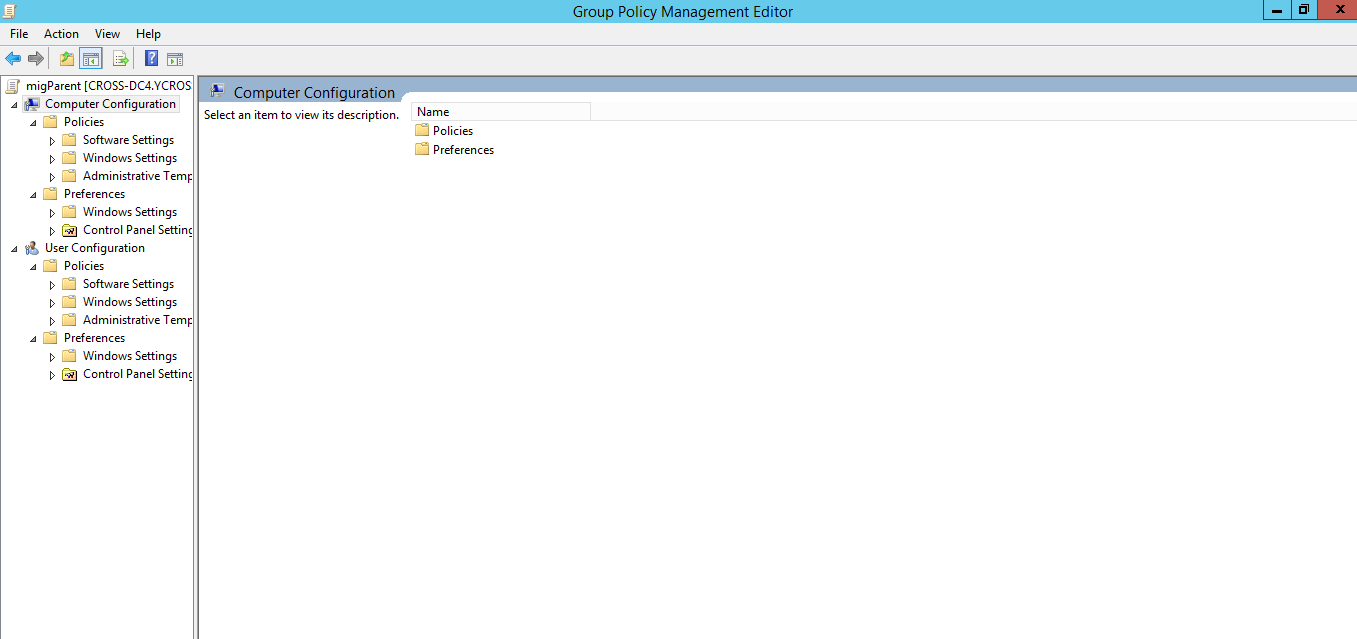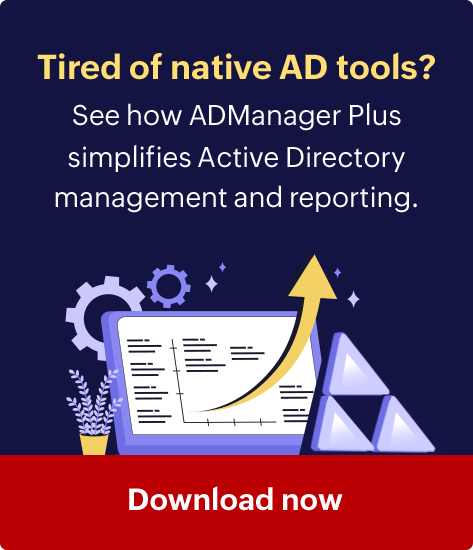- Knowledge base
- Active Directory management
- Active Directory reports
- Active Directoy integrations
- Active Directory automation
- Active Directory delegation
- Governance, risk, and compliance
- Microsoft 365 management and reporting
- AD migration
- Access certification
- Identity risk assessment
- Risk exposure management
- FAQs
- Pricing
- Online demo
- Request support
- Get quote
The Group Policy Editor is a Windows administration tool that enables administrators configure and modify Group Policy settings within GPOs for Windows PCs. It lets them configure settings, such as password requirements and startup programs, on their computer networks and decide what applications and settings can be changed by users in their organization.
Components of the Group Policy Editor
The Group Policy Editor consists of User Configuration and Computer Configuration.
- User Configuration: These settings apply to users no matter which computer they log into, ensuring a consistent experience across multiple devices.
- Computer Configuration: These settings apply to the local computer and affect all users who log in, regardless of their individual accounts.
These settings can be further expanded into:
- Software Settings: Stores software-related policies and is empty by default.
- Windows Settings: Includes security settings and startup and shutdown scripts for Windows.
- Administrative Templates: Provides configuration templates for Windows settings, such as the Control Panel, Start Menu, user profiles, and Windows updates.

Limitation of the Group Policy Editor
The local Group Policy Editor is a basic tool to help manage security across the organization. But managing policies for different users and computers in your environment can be quite challenging. Modifying the policy frequently can also make it difficult to update the GPOs each time manually. Additionally, monitoring GPO changes and maintaining comprehensive reports are required for audits and compliance. But manually generating these reports can be time-consuming and prone to errors.
How ADManager Plus can help
ADManager Plus is a powerful Active Directory management and reporting tool with GPO management and reporting capabilities. Easily configure GPOs in bulk, modify them, and keep an eye on any changes with detailed GPO reports.
Here are some actions you can perform on GPOs with ADManager Plus:
- Edit GPOs
- Enable, disable, and delete GPOs
- Enable, disable, and delete GPO link
- Update GPO link order
- Block and unblock inheritance of GPO links
- Identify recently modified GPOs and the linked Active Directory objects
- Monitor GPO changes and information with pre-built reports
Want to start managing GPOs with ADManager Plus? Download a free, 30-day trial or schedule a demo with us.















